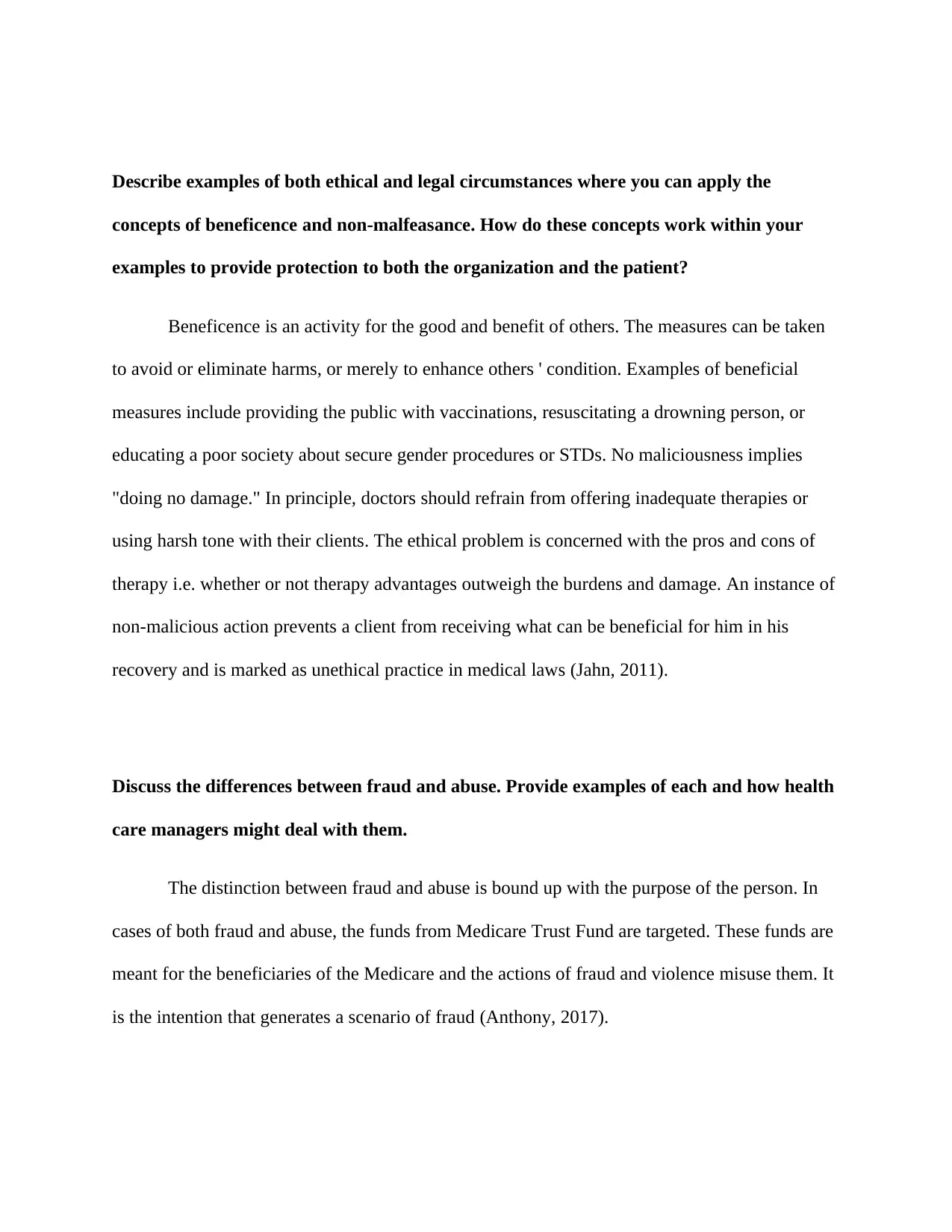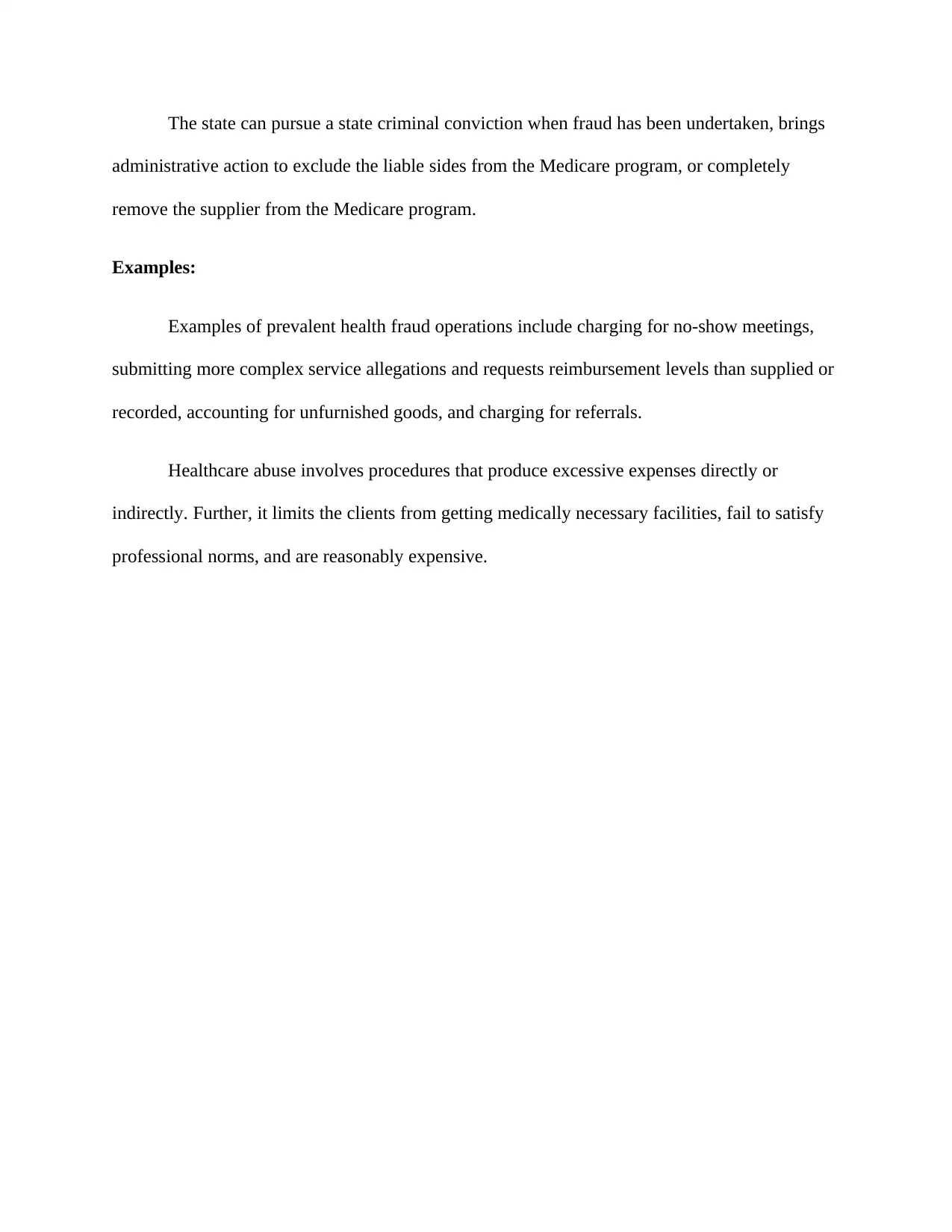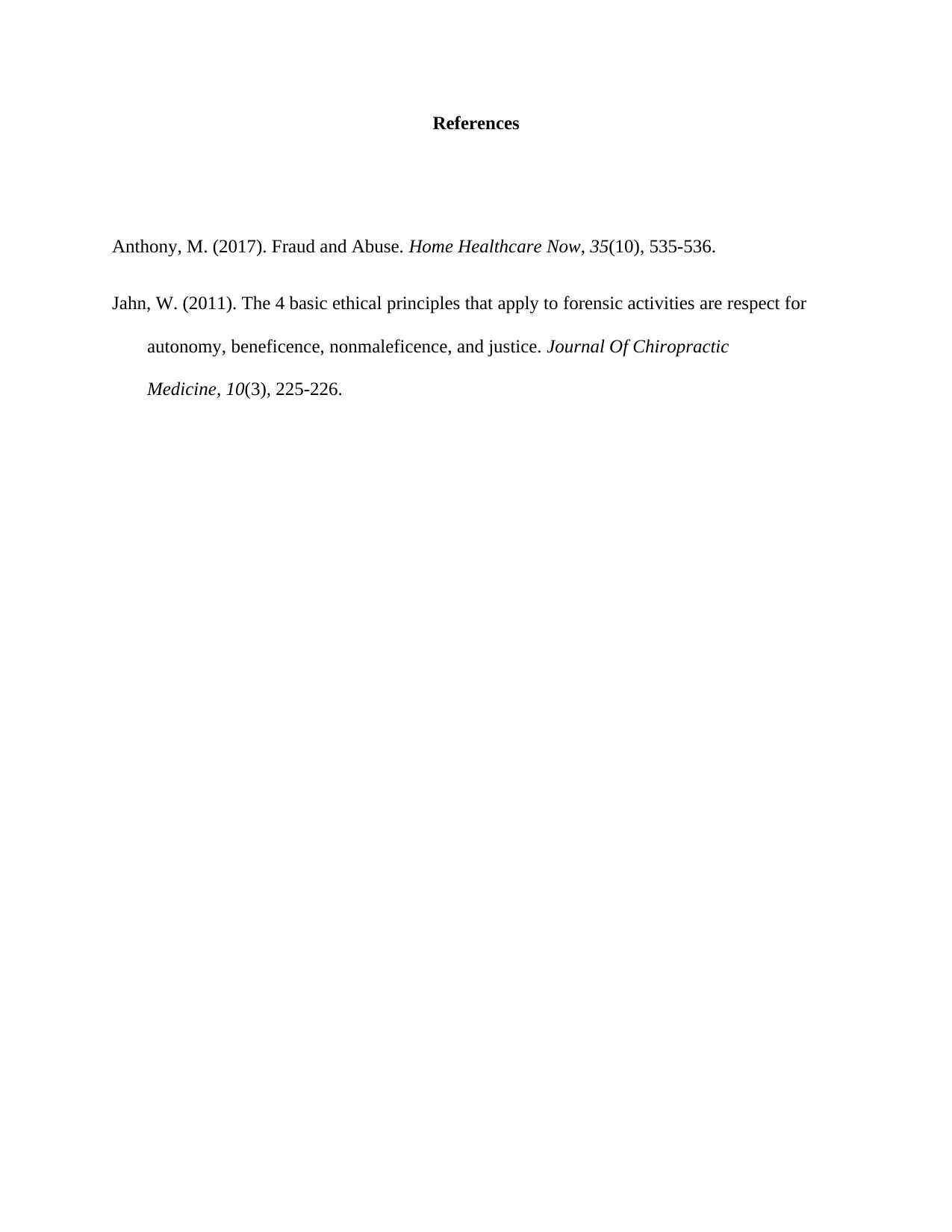Beneficence, Non-Malfeasance, Fraud, and Abuse in Healthcare Settings
VerifiedAdded on 2023/01/10
|3
|448
|80
Report
AI Summary
This report delves into the ethical and legal considerations within healthcare, focusing on the principles of beneficence and non-malfeasance. It provides examples illustrating how these principles can be applied to benefit patients and protect organizations. The report also distinguishes between fraud and abuse in healthcare, offering examples of each and discussing how healthcare managers can address these issues. Specifically, it explores how fraud involves intentional misrepresentation for financial gain, while abuse involves actions that lead to unnecessary costs or compromise the quality of care. The report references relevant literature to support its analysis, emphasizing the importance of ethical practices and legal compliance in healthcare settings. The main idea of the report is to provide healthcare professionals, students and managers with the tools needed to navigate ethical dilemmas and maintain integrity within the industry.
1 out of 3






![[object Object]](/_next/static/media/star-bottom.7253800d.svg)